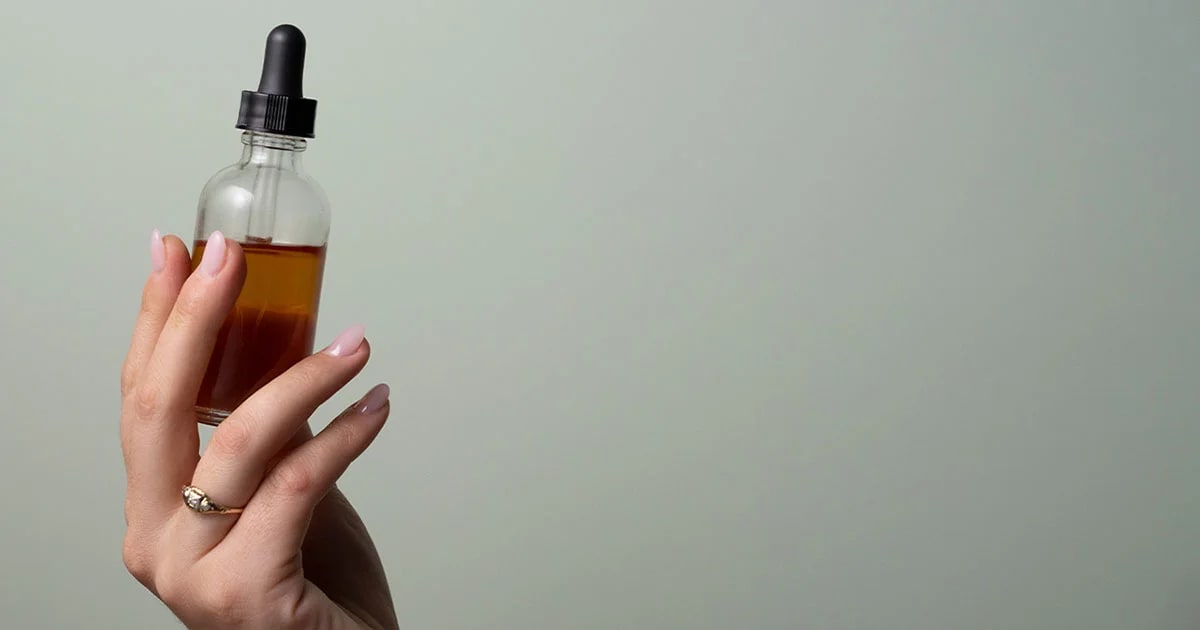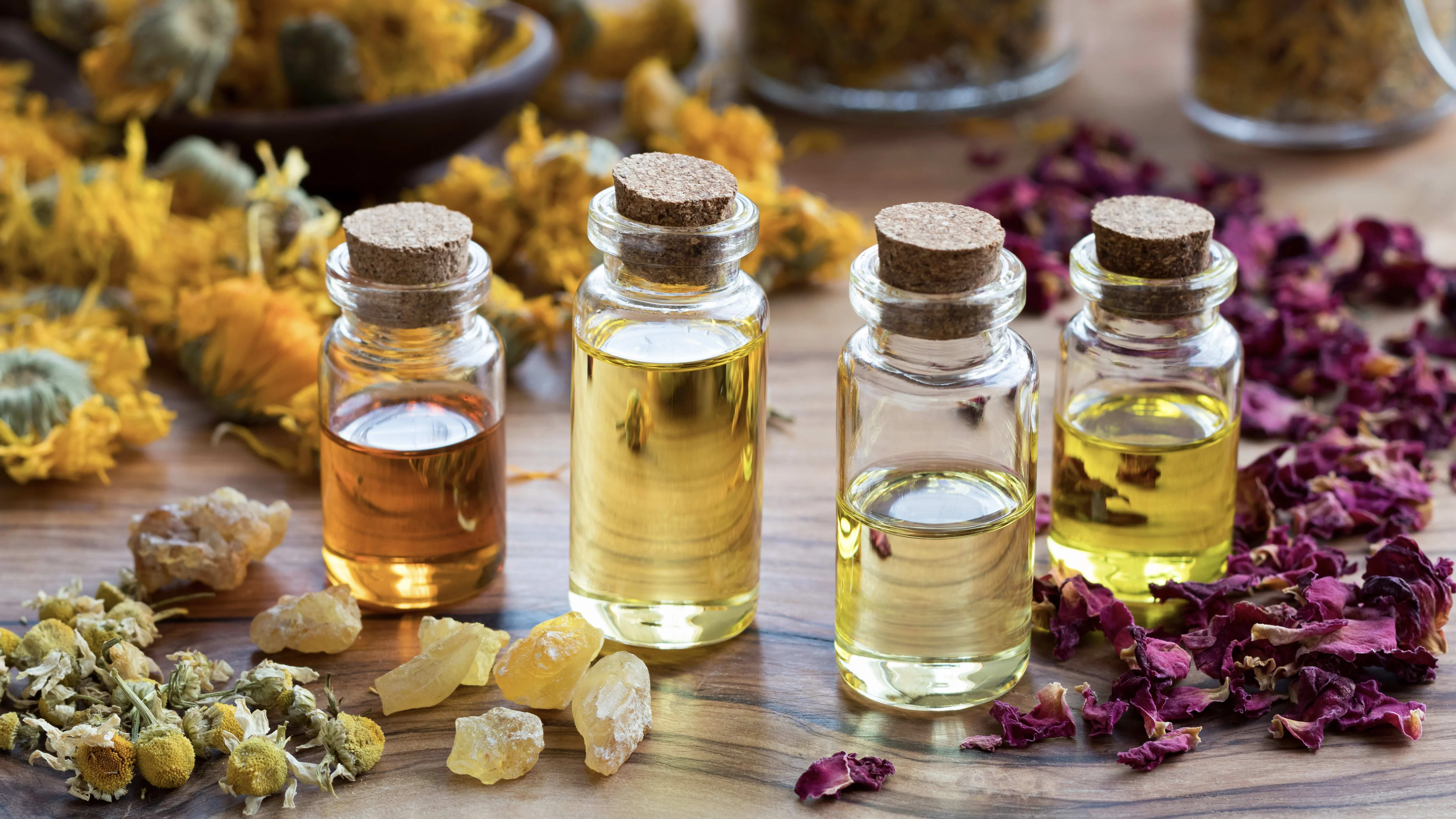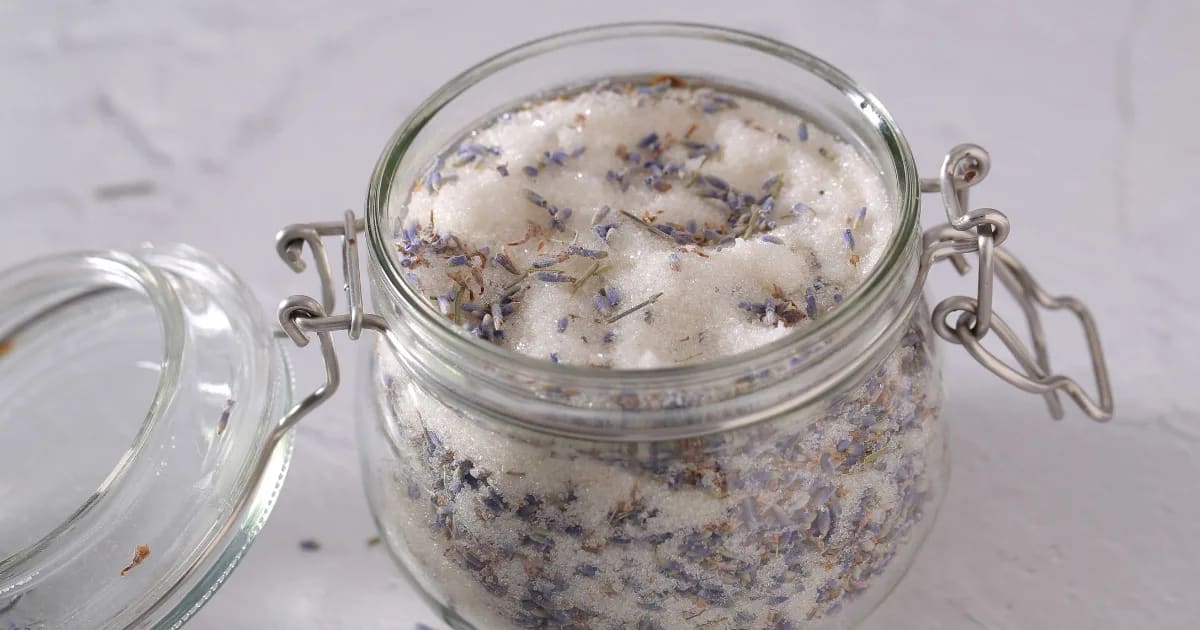Your knees will love this essential oil joint rub recipe

How 4 essential oils offer relief in this joint rub recipe.
This is an essential oil joint rub recipe you can use on an ongoing basis.
That's an important quality in an essential oil joint rub! We often need to care for joints over an extended period of time. So we want a blend that's powerful yet gentle enough for regular use.
This essential oil joint rub is made in a base of Trauma Oil and is chock-full of inflammation-calming components like α-pinene, d-limonene, and eugenol.
Trauma Oil for joint care
Trauma Oil is a carrier oil that's been infused with traditional soothing herbs for pain relief.
There are lots of different recipes for Trauma Oil. My favorite recipe starts out as plain, extra-virgin, organic, unrefined olive oil. The oil is poured over soothing herbs in a glass jar and allowed to sit in the sun for several weeks. The warm sun draws out the plants' therapeutic components, and then the herbs and flowers are strained out of the oil.
This Trauma Oil is handmade by Aromatics International. They make it in the mountains of Montana, using wildcrafted and organic flowers: arnica, calendula, and St. John's wort.
Learn more about Trauma Oil (and 3 ways to use it) on our blog here!
Cedarwood Joint Rub Oil
Use this body oil to soothe tired, achy joints.
Ingredients
1 fl oz (30 ml) Trauma Oil
7 drops Cedarwood Atlas essential oil (Cedrus atlantica)
5 drops Juniper Berry essential oil (Juniperus communis)
4 drops Gingergrass essential oil (Cymbopogon martinii var sofia)
2 drops Clove Bud essential oil (Syzygium aromaticum/Eugenia caryophyllata)
Equipment
One 1 oz (30 ml) Amber Glass Bottle with Coned Cap
Directions
Pour the Trauma oil into the glass bottle.
Add the essential oils and tighten the cap.
Gently shake the bottle to combine.
Make this essential oil joint rub in a 1 oz (30 ml) glass bottle. Combine the Trauma Oil and essential oils, close the bottle, and shake gently.
Massage your joint rub oil into sore fingers, knees, elbows, wrists, or wherever you need it!
Let's talk about the oils in this essential oil joint rub recipe!
Cedarwood Atlas essential oil
Cedrus atlantica
This type of Cedarwood is from the Atlas Mountains. (It's different from the oil many people know as “Cedarwood,” which is from North America and has the Latin name Juniperus virginiana.)
Cedarwood Atlas is a “true Cedar,” with the Latin name Cedrus atlantica. It has a woody scent with warm, resinous notes. Most people find the aroma deeply relaxing. Rich in sesquiterpenes, this oil is often used to calm inflammation in joints.
Juniper Berry essential oil
Juniperus communis
Juniper Berry is one of my favorite oils to use for any kind of joint pain! It's rich in monoterpenes, especially α-pinene, which has been shown to calm inflammation.
Juniper Berry has a warm touch as it gets the circulation moving where it's applied. It ushers out tight, constricted energy—especially for areas that feel swollen and stiff—and allows for an easier flow of movement.
Gingergrass essential oil
Cymbopogon martinii var sofia
Gingergrass essential oil has a spicy ginger-like aroma with sweet hints of lemon and green herbs.
This is another warming oil that can relieve sore, tight, cool joints. Gingergrass usually contains high percentages of camphene with a healthy dose of d-limonene. Both of these components have been shown to calm inflammation, making Gingergrass doubly beneficial in a joint rub.
Clove Bud essential oil
Syzygium aromaticum/Eugenia caryophyllata
Another warming oil! Clove Bud is one of my go-to essential oils for any type of pain relief. You'll even find it in many ready-made natural products for different types of pain. Its effects are largely due to its high eugenol content (which is typically over 75%!)
Eugenol is a natural component that's been proven to reduce pain and inflammation—even tough, ongoing cases in joints. However, it's very strong. As it gets the circulation flowing, it brings heat to the area where it's applied—and can even cause skin irritation.
That's why I'm keeping my drop count for Clove Bud in this recipe low. I want to be sure you can use this blend as needed without the risk of irritation.
I hope this joint rub recipe becomes your new best friend in the journey to calm, happy joints.
NOTE: Atlas Cedarwood (Cedrus atlantica) is on the endangered list. It's a good idea to ask your supplier how their oil is sourced and produced. Aromatics International gets their Cedrus atlantica from a plantation that uses sustainable practices, so the wood isn't taken from the wild. (Just like Sandalwood, there are plantations that grow Cedrus atlantica with fully sustainable harvesting methods.) It's exciting to see this type of conservation and sustainability making a positive impact! We can also suggest using Juniperus virginiana instead of Cedrus atlantica.
Join us for a deep dive into how to use your essential oils for wound healing and first aid. In this workshop, First Aid Remedies with 3 Essential Oils and Aloe Vera, you’ll learn how to effectively use your oils for healing scrapes, wounds, bruises, and so much more!
REFERENCES
Akkol, E.K., Güvenc, A. and Yesilada, E. (2009) A comparative study on the antinociceptive and anti-inflammatory activities of five Juniperus taxa. Journal of Ethnopharmacology 125, 2, 330-336
Baylac, S. and Racine, P. (2003) Inhibition of 5-lipoxygenase by essential oils and other natural fragrant extracts. International Journal of Aromatherapy 13, 2/3, 138-142
Daniel, A.N., Sartoretto, S.M., Schmidt, G., Caparroz-Assef, M., Bersani-Amado, C.A. and Cuman, R.K.N. (2008) Antiinflammatory and antinociceptive activities of eugenol essential oil in experimental animal models. Brazilian Journal of Pharmacognosy 19, 212-217
Guimarães AG, Quintans JSS, Quintans-Júnior LJ. (2013) Monoterpenes with analgesic activity – a systematic review. Phytotherapy Research 27,1-15
Quintans-Júnior L, Moreira JCF, Pasquali MAB, Rabie SMS, Pires AS, Schröder R, Rabelo TK, Santos JPA, Lima PSS, Cavalcanti SCH, Araújo AAS, Quintans JSS, Gelain DP. (2013) Antinociceptive activity and redox potential of the monoterpenes (+)-camphene, p-cymene and geranyl acetate in experimental models. ISRN Toxicology Article ID 459530. http://dx.doi.org/10.1155/2013/459530





